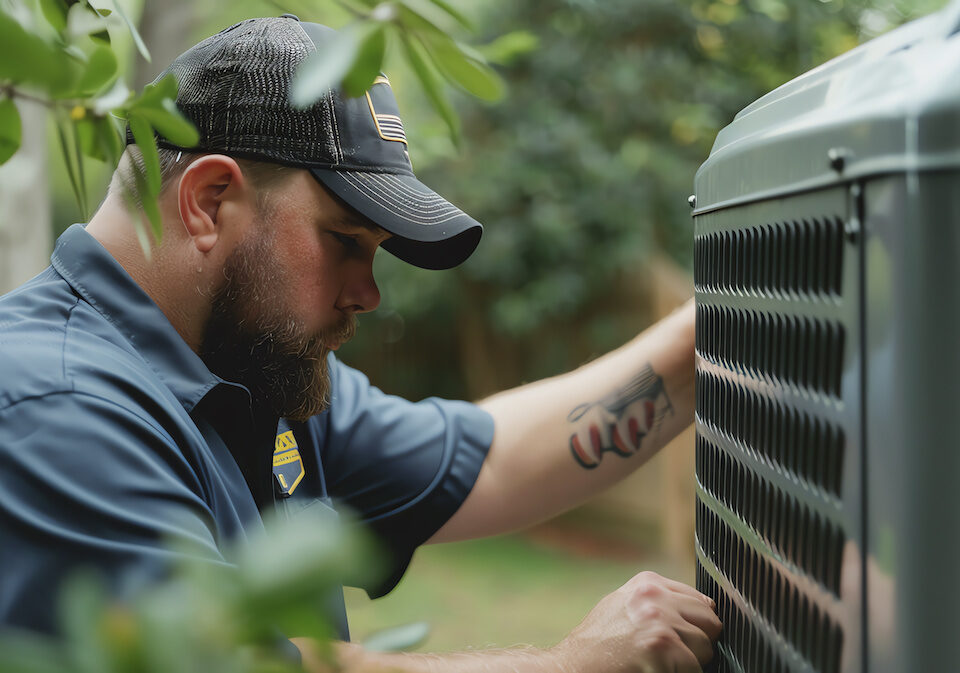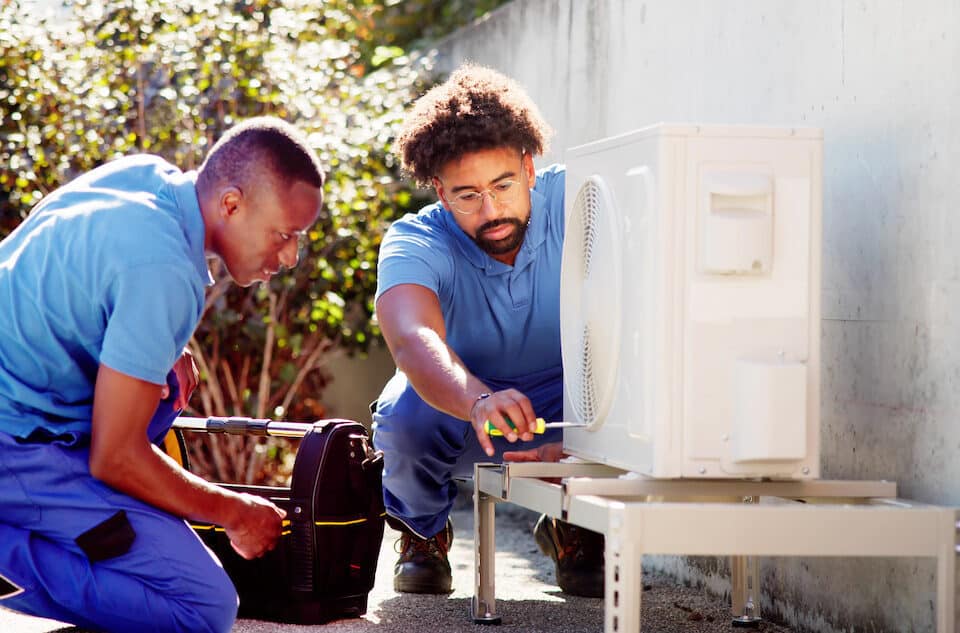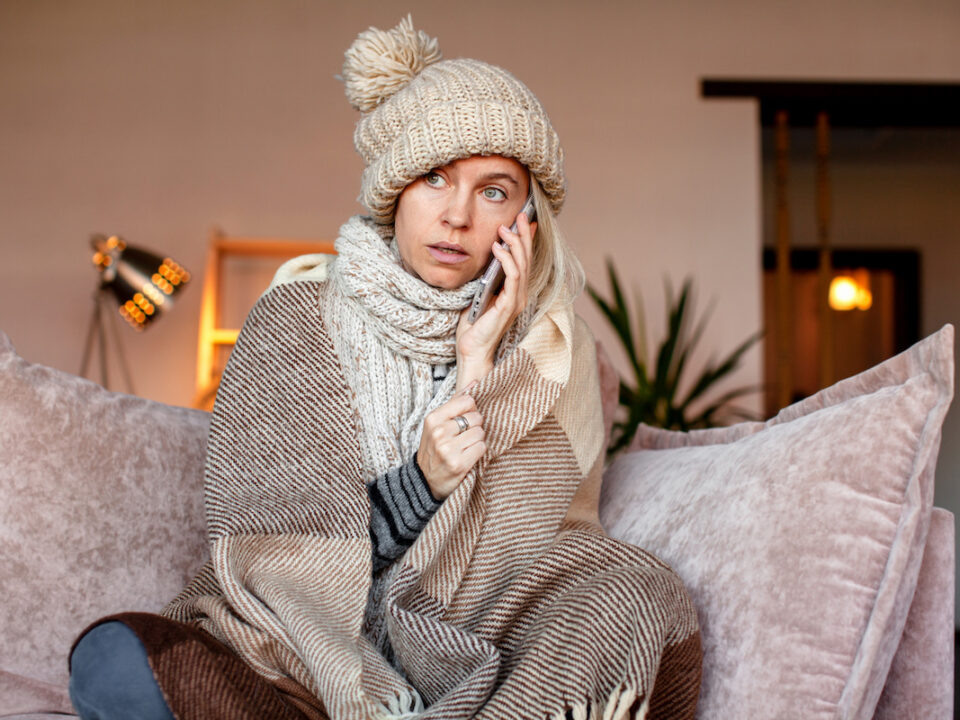Heat Stroke vs. Heat Exhaustion

Identifying Heat Stroke vs. Heat Exhaustion
Georgia summers can be pretty hot and humid. With this change in weather comes a higher risk of heat-related illnesses, like heat stroke and heat exhaustion. These ailments may elevate to severe levels in no time at all. That’s why TRUST Heating & Air is here to educate you on the difference between heat stroke vs. heat exhaustion.
Plus, we guide you through the signs, symptoms, causes, and risk factors. And most importantly, we tell you just how to prevent these serious illnesses and what to do when you or a loved one experiences them.
Knowing the Difference in Heat Stroke vs. Heat Exhaustion
While heat exhaustion may be treatable without professional medical care, heat stroke is always an emergency in which medical treatment is necessary to avoid further complications.
Sometimes, heat stroke is not taken seriously by those who are unaware of the differences between heat stroke vs. heat exhaustion. This can be a deadly mistake, making it critical to know the signs of both heat-related illnesses and address them accordingly.
To begin to understand these ailments, be familiar with the spectrum of heat-related illnesses:
Heat Rash– A red, irritating rash may develop in extreme heat conditions. It typically appears where sweat will get trapped, like your elbows or behind the knees.
Heat Cramps– When you sweat, your body loses fluids and salts. As a result, you may experience sharp muscle cramps.
Heat Exhaustion– When your body can’t cool down through sweating, heat exhaustion occurs. It’s more serious than a heat rash and heat cramps, and when untreated, it can lead to dangerous heat stroke.
Heat stroke– heat stroke is a serious condition where people often stop sweating, and their body temperature increases drastically, leading to other severe symptoms. When untreated, it can be life-threatening.
What Causes Heat Exhaustion and Heat Stroke?
Several factors can cause heat stroke or heat exhaustion. Sweating is your body’s automatic cooling method when overworking yourself or in extreme heat conditions. When you are pushed to your limits, it may become challenging for your body to produce the sweat it needs to maintain safe bodily temperatures.
Furthermore, a lack of proper hydration, inexperience in high heat environments, tight or heavy clothing, and consuming alcohol may induce heat stroke or heat exhaustion when paired with other conditions.
Heat, humidity, and physical activity are the common factors leading to heat-related illnesses.
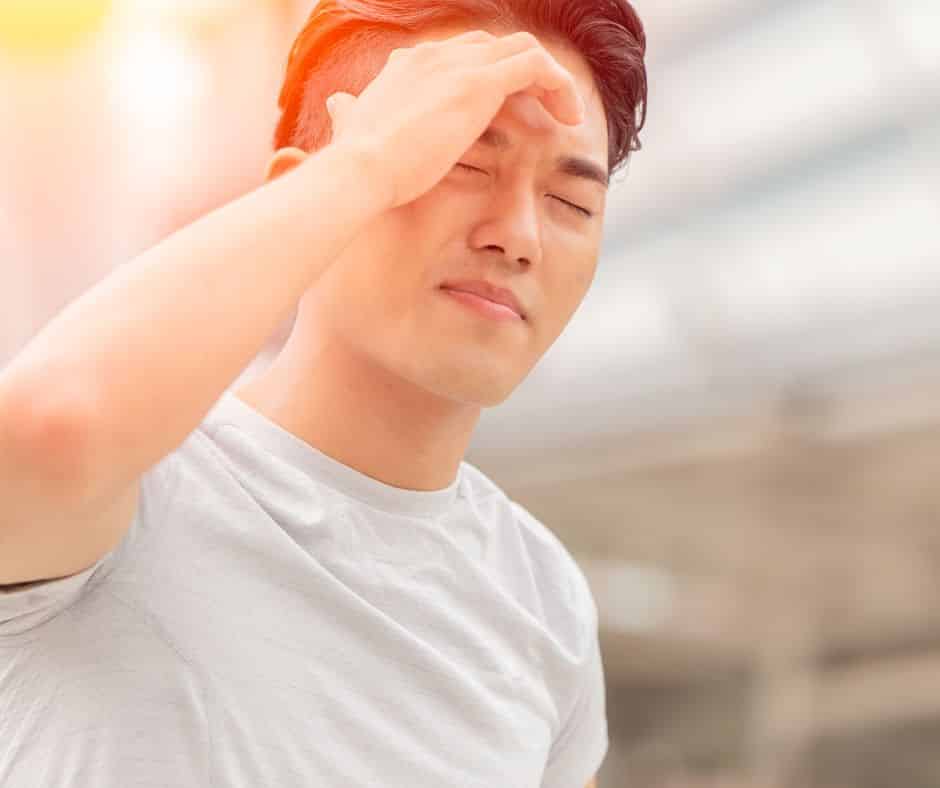
About Heat Exhaustion
Heat exhaustion is your body’s natural response to the continuous loss of water and salt. It can be avoided by properly hydrating and other prevention methods. Nevertheless, it’s crucial to know the gradual signs of less severe heat-related illnesses and appropriately react to them promptly to avoid heat exhaustion.
Furthermore, when experiencing heat exhaustion, you must treat it immediately and correctly to prevent the onset of heat stroke.
Signs and Symptoms
- Body temperature increases
- Muscle cramps
- Heavy sweating
- Headache
- Rapid breathing
- Heightened heart rate
- Lightheadedness
- Nausea
- Vomiting
- Pale, cold skin
- Weakness
- fatigue
What to Do When Experiencing Heat Exhaustion
When heat exhaustion strikes, the first thing to do is lie down and hydrate with water or sports drinks. Find a cool shaded location if possible. Additionally, you’ll want to remove unnecessary clothing, like shoes and socks.
As soon as possible, attempt to cool your body temperature by taking a cold shower or using ice on the skin. If vomiting occurs and refuses to subside, seek medical attention immediately.
About Heat Stroke
Heat stroke can happen quickly when heat exhaustion is not taken seriously. In fact, in just 10 to 15 minutes, your body’s temperature can climb to hazardous levels. Following this, a person may lose consciousness, experience hallucinations, or even undergo a seizure.
Signs and Symptoms
- body temperature above 104 degrees Fahrenheit
- rapid, strong heart rate
- severe and sudden headache
- inability to sweat
- confusion or hallucinations
- loss of consciousness
- hot and red skin
- seizures
- dizziness or fainting
What to Do When Experiencing Heat Stroke
As soon as it is safe to do so, dial 911 for emergency care.
Regarding heat exhaustion vs. heat stroke, the latter is far more severe and must be taken very seriously. Like heat exhaustion, you’ll want to lie down and move to a cooler, shaded location. Furthermore, you’ll use ice or a chilled cloth to cool the body.
Know the Risk Factors for Heat Stroke and Exhaustion
To stay safe while enjoying the outdoors during the hottest times of the year, it is essential to know the risk factors for heat-related illnesses. Use the following information to keep you and your family from becoming dangerously ill in high heat situations.
Dehydration: When you sweat excessively and do not drink the right amount of water, your body cannot replace the lost fluids. All too easily, this can lead to a heat-related illness, like heat stroke or heat exhaustion. Additionally, consuming alcohol outdoors on a hot and humid day may increase your risk because alcohol contributes to dehydration.
Strenuous Activity: If you work or exercise outside, your risk for heat stroke or heat exhaustion increases. High levels of activity in hot weather will cause your body to produce sweat. And without adequate hydration or frequent breaks, heat-related illnesses may occur.
Age: Babies, young children, and older adults have a much higher chance of heat stroke or heat exhaustion than others.
Heat Acclimation: Over time, your body becomes more used to high temperatures and high humidity levels. For instance, if you spend much of your time indoors or live in a colder climate, your chances of heat-related illnesses increase. On the other hand, if you allow yourself to gradually get used to exercising in a hot environment, you’re less likely to experience heat stroke or heat exhaustion.
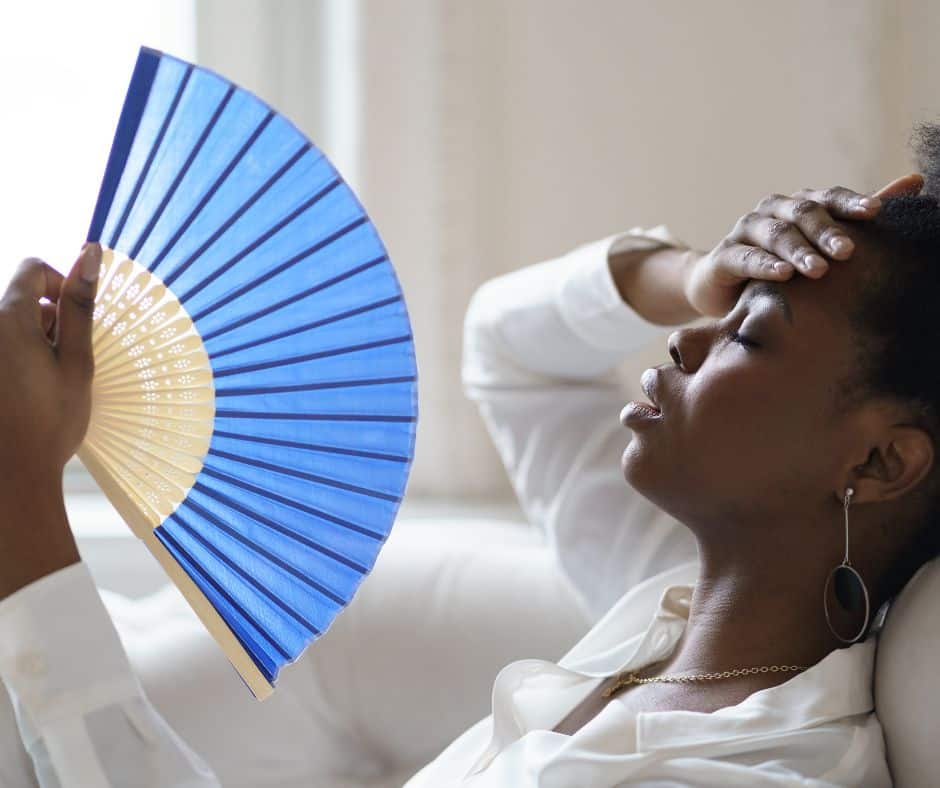
Preventing Heat Stroke and Heat Exhaustion This Summer
Fortunately, heat stroke and heat exhaustion are absolutely avoidable when the correct precautions are followed. When participating in physical activity outside this summer, remember the following tips to prevent heat-related illnesses:
- Drink plenty of water in a hot environment, especially while participating in physical activity.
- Take frequent breaks to allow your body to cool down and reset from the heat or strenuous activity.
- Know the early signs of heat-related illnesses and respond to them appropriately.
- Use the buddy system when exercising outdoors during the hottest times of the year. Be sure to keep an eye on one another and encourage breaks and hydrations throughout your routine.
- Avoid alcohol and caffeine during physical activity, particularly in the heat.
- Exercise indoors when outdoor conditions are excessively hot and humid.
- Wear appropriate clothing when outside on a hot day or participating in physical activity. It’s best to wear minimal fabric that is light and loose-fitting. Additionally, avoid darker colors that absorb more heat.
Staying Cool with TRUST Heating & Air
Just because heat illnesses typically occur outside doesn’t mean it’s impossible to experience them indoors. If your AC is giving you trouble this summer, do not risk the possibility of heat stroke or heat exhaustion. Instead, give TRUST Heating & Air a call immediately. We will arrive at your home in no time to ensure you and your family remain safe and healthy.
Furthermore, it is crucial to have an HVAC system in working condition for these hot and humid months. The AC inside your home may be the best place to escape when symptoms of heat-related illnesses begin. Be sure your HVAC will be reliable for the summer heat by having it serviced by our skilled professionals at TRUST before the season starts.

